Kilian Hett
LaBRI
Tensor-Based Grading: A Novel Patch-Based Grading Approach for the Analysis of Deformation Fields in Huntington's Disease
Jan 23, 2020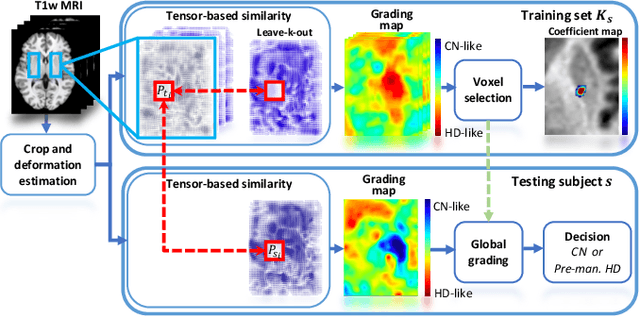
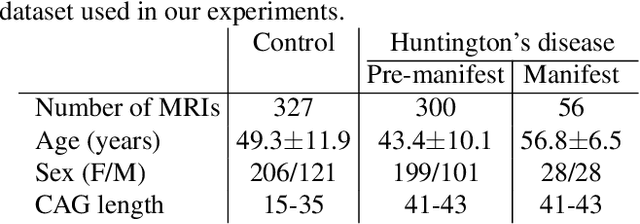
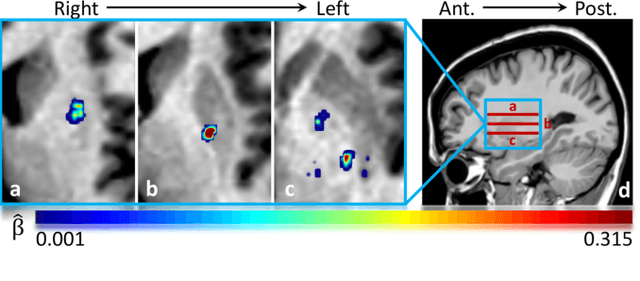

Abstract:The improvements in magnetic resonance imaging have led to the development of numerous techniques to better detect structural alterations caused by neurodegenerative diseases. Among these, the patch-based grading framework has been proposed to model local patterns of anatomical changes. This approach is attractive because of its low computational cost and its competitive performance. Other studies have proposed to analyze the deformations of brain structures using tensor-based morphometry, which is a highly interpretable approach. In this work, we propose to combine the advantages of these two approaches by extending the patch-based grading framework with a new tensor-based grading method that enables us to model patterns of local deformation using a log-Euclidean metric. We evaluate our new method in a study of the putamen for the classification of patients with pre-manifest Huntington's disease and healthy controls. Our experiments show a substantial increase in classification accuracy (87.5 $\pm$ 0.5 vs. 81.3 $\pm$ 0.6) compared to the existing patch-based grading methods, and a good complement to putamen volume, which is a primary imaging-based marker for the study of Huntington's disease.
Multi-scale Graph-based Grading for Alzheimer's Disease Prediction
Jul 15, 2019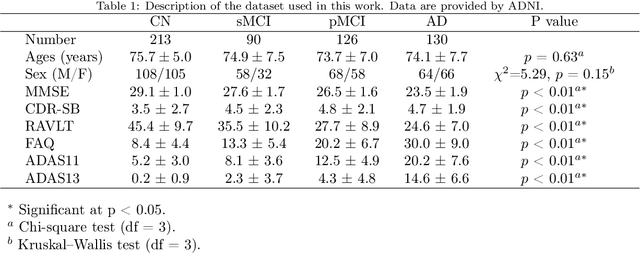
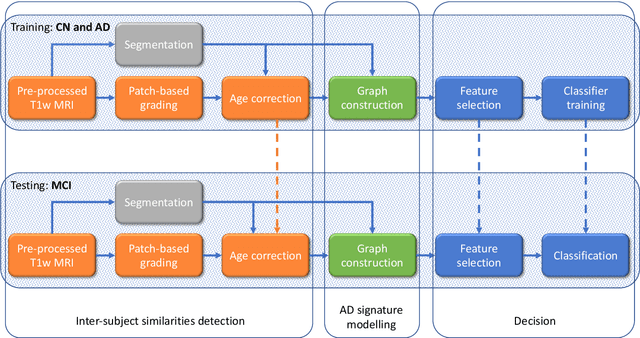
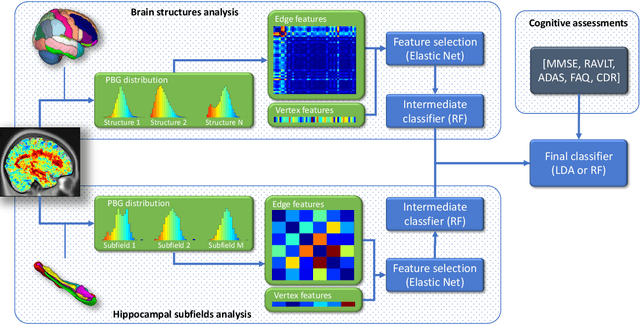
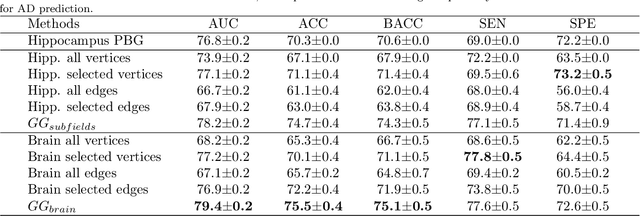
Abstract:The prediction of subjects with mild cognitive impairment (MCI) who will progress to Alzheimer's disease (AD) is clinically relevant, and may above all have a significant impact on accelerate the development of new treatments. In this paper, we present a new MRI-based biomarker that enables us to predict conversion of MCI subjects to AD accurately. In order to better capture the AD signature, we introduce two main contributions. First, we present a new graph-based grading framework to combine inter-subject similarity features and intra-subject variability features. This framework involves patch-based grading of anatomical structures and graph-based modeling of structure alteration relationships. Second, we propose an innovative multiscale brain analysis to capture alterations caused by AD at different anatomical levels. Based on a cascade of classifiers, this multiscale approach enables the analysis of alterations of whole brain structures and hippocampus subfields at the same time. During our experiments using the ADNI-1 dataset, the proposed multiscale graph-based grading method obtained an area under the curve (AUC) of 81% to predict conversion of MCI subjects to AD within three years. Moreover, when combined with cognitive scores, the proposed method obtained 85% of AUC. These results are competitive in comparison to state-of-the-art methods evaluated on the same dataset.
Graph of brain structures grading for early detection of Alzheimer's disease
Jul 06, 2018



Abstract:Alzheimer's disease is the most common dementia leading to an irreversible neurodegenerative process. To date, subject revealed advanced brain structural alterations when the diagnosis is established. Therefore, an earlier diagnosis of this dementia is crucial although it is a challenging task. Recently, many studies have proposed biomarkers to perform early detection of Alzheimer's disease. Some of them have proposed methods based on inter-subject similarity while other approaches have investigated framework using intra-subject variability. In this work, we propose a novel framework combining both approaches within an efficient graph of brain structures grading. Subsequently, we demonstrate the competitive performance of the proposed method compared to state-of-the-art methods.
 Add to Chrome
Add to Chrome Add to Firefox
Add to Firefox Add to Edge
Add to Edge